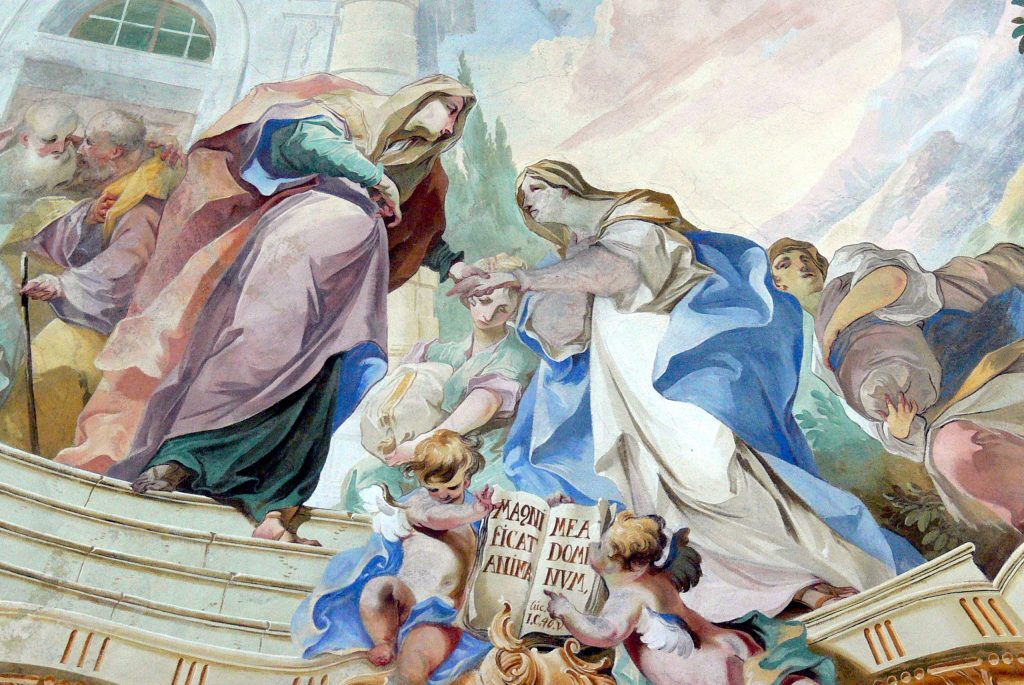
In the 1750s, Abbot Jacob Pach launched plans for the generous reconstruction of his monastery church in (Klein-) Mariazell in Austria. At that time, the church no longer met the current taste and he therefore aimed at adapting it to the spirit of the baroque ear in terms of light and friendliness. Large domes replaced the Gothic vaults, substantial windows brought more light into the interior, and huge paintings with motives from the Glorious and the Joyful Mysteries were intended to vividly portrait the exemplary life of Mary and the childhood of Jesus to the faithful. As the high altar and the side altars were no longer up to the expectations of the time, they were replaced with new ones. It may have been through Ignaz Mildorfer, who had already made many paintings for the monastery at Hafnerberg, that the Abbot had heard about Johann Wenzel Bergl who was at the early stages of his career. In the winter of 1758, Abbot Pach engaged Bergl to do the frescos for the entire church and also commissioned him with four large-scale altarpieces. Both tasks were completed in record time: On November 9th of the following year, the Sacred Image was solemnly transferred onto the high altar to mark the finalisation of the monastery church’s redesign.
(Klein-) Mariazell was not only Bergl’s first major religious oeuvre in Austria but also one of his most significant ones, and it is certainly one of the main works of late-baroque painting in Austria.
To commemorate the anniversary year, Klein-Mariazell plans a number of special guided tours, the establishment of a theme trail on the life and works of the great master as well as many further events.
